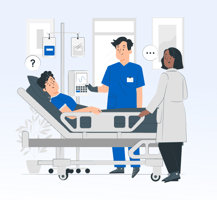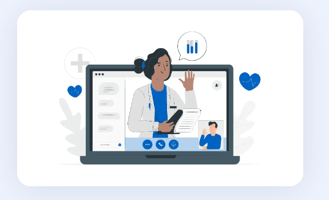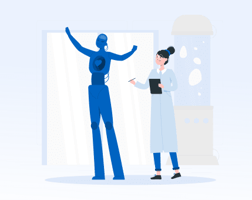Introduction
Enhancing Healthcare Services with Patient Portal Development
Introduction
In today's rapidly evolving healthcare landscape, patient-centric care has become a paramount focus. One significant technological advancement that has transformed the way healthcare services are delivered is the development of patient portals. These secure online platforms empower patients, healthcare providers, and administrators by facilitating seamless communication, easy access to medical information, and efficient management of healthcare processes. In this article, we delve into the world of patient portal development, exploring its benefits, key features, and the impact it has on modern healthcare.
The Role of Patient Portals in Healthcare
Patient portals are web-based platforms that serve as a bridge between patients and healthcare providers. They provide a secure and convenient space for patients to access a wide range of healthcare services and information. From viewing test results and scheduling appointments to communicating with healthcare professionals and managing prescriptions, patient portals offer a comprehensive suite of tools that streamline and enhance the patient experience.
Key Benefits of Patient Portals
-
Access to Personal Health Information: Patient portals grant patients the ability to access their medical records, test results, and treatment plans. This transparency encourages patient engagement and empowers individuals to take an active role in their healthcare journey.
-
Efficient Communication: Secure messaging features enable patients to communicate directly with their healthcare providers, eliminating the need for time-consuming phone calls or in-person visits for minor queries. This fosters timely and efficient communication.
-
Appointment Scheduling: Patient portals allow patients to request appointments and view available slots, simplifying the scheduling process. Automated reminders help reduce no-shows, optimizing clinic schedules.
-
Prescription Management: Patients can request prescription refills and receive notifications when prescriptions are ready. This feature ensures medication adherence and reduces administrative burden.
-
Health Education: Many portals offer educational resources, empowering patients with information about their conditions, treatment options, and preventive care measures.
-
Telemedicine Integration: Integrating telemedicine features into patient portals enables virtual consultations, bringing healthcare access to remote or immobile patients.
Key Features of a Robust Patient Portal
-
User-Friendly Interface: An intuitive design ensures ease of use for patients of all ages and technical abilities.
-
Security and Privacy: Robust data encryption and compliance with healthcare regulations (like HIPAA in the United States) are paramount to maintaining patient trust.
-
Customizable Profiles: Patients should be able to update their personal information, medical history, and insurance details as needed.
-
Appointment Management: Integration with the healthcare provider's scheduling system allows patients to book, reschedule, or cancel appointments.
-
Secure Messaging: Two-way communication between patients and healthcare providers must be secure, confidential, and easily accessible.
-
Mobile Accessibility: A responsive mobile app or website ensures patients can access their portal on-the-go.
-
Integration with EHR Systems: Seamless integration with Electronic Health Records (EHR) systems guarantees real-time access to accurate medical information.
Conclusion
Patient portal development has revolutionized the way healthcare services are delivered by fostering patient engagement, streamlining administrative processes, and improving communication between patients and providers. As the healthcare industry continues to embrace digital transformation, patient portals stand as a shining example of technology's potential to enhance the quality of care and overall patient experience. By offering a user-friendly interface, robust security measures, and a comprehensive suite of features, patient portals pave the way for a more patient-centered, efficient, and accessible healthcare system.


